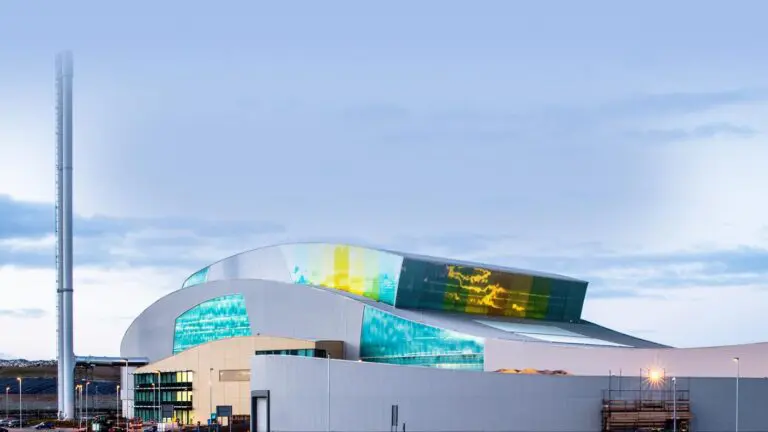A green hydrogen project in Utah has received a $504.4 million loan guarantee from the Department of Energy’s Loan Programs Office, the first guarantee awarded to a clean energy project in nearly a decade.
The Advanced Clean Energy Storage project will combine 220 MW of alkaline electrolysis with two 4.5-million-barrel salt caverns to store clean hydrogen.
The project is intended to capture excess renewable energy when it is most abundant, store it as hydrogen, and then deploy it as fuel for the Intermountain Power Agency’s IPP Renewed Project. The hydrogen-capable gas turbine combined cycle power plant would be incrementally fueled by 100% clean hydrogen by 2045.
The Advanced Clean Energy Storage project received a conditional commitment from LPO in April. This is the first time a green hydrogen project has received a loan guarantee from DOE.
The Utah project is planned to include retiring existing coal-fueled power generating units at the IPP site; installing new natural gas-fueled electricity generating units capable of utilizing hydrogen for 840 MW net generation output; modernizing IPP’s Southern Transmission System linking IPP to Southern California, and developing hydrogen production and long-term storage capabilities.
IPP would use renewable energy-powered electrolysis to split water into oxygen and hydrogen. The new natural gas generating units, expected to be supplied by Mitsubishi Power, would use 30% hydrogen fuel at start-up, transitioning to all hydrogen fuel by 2045 as technology improves. The Los Angeles Department of Water and Power would be the off-taker for electricity produced by the facility.
50-fold increase
Across all its programs, LPO has attracted more than 70 active applications for projects in 24 states totalling nearly $79 billion in requested loans and loan guarantees as of the end of May.
With the closing of this loan guarantee, LPO now has $2.5 billion in remaining loan guarantee authority for Innovative Clean Energy projects.
“Accelerating the commercial deployment of clean hydrogen as a zero-emission, long-term energy storage solution is the first step in harnessing its potential to decarbonize our economy, create good-paying clean energy jobs and enable more renewables to be added to the grid,” Energy Secretary Jennifer Granholm said.
Green hydrogen plays an important role in the Biden administration’s goal of reaching net-zero emissions by 2050.
DOE’s National Energy Technology Laboratory determined that U.S. clean hydrogen production and use must increase 50-fold by 2050 to meet the country’s decarbonization goals.
Report findings noted while many opportunities exist for hydrogen’s growth, government leadership would be critical in achieving decarbonization goals. This would include tax credits and incentives, research, development and demonstration funding.
The DOE’s Office of Energy Efficiency and Renewable Energy has announced its intent to issue a funding opportunity to analyze the potential for regional clean energy deployments, all in the name of reducing the cost of green hydrogen production from $5 per kilogram to $1 by 2030.
Additionally, President Biden’s FY 2022 budget request includes $400 million for hydrogen activities, compared to $285 million in FY 2021.
Green (or clean) hydrogen produced using renewable energy and electrolysis represents only 5% of the hydrogen produced in the U.S. due to its high cost. In comparison, the remaining 95% is produced using fossil fuels.
So-called “blue hydrogen” from natural gas incorporates carbon capture and storage. However, recent studies suggest the practice could produce even more carbon emissions in heat generation than natural gas alone.







